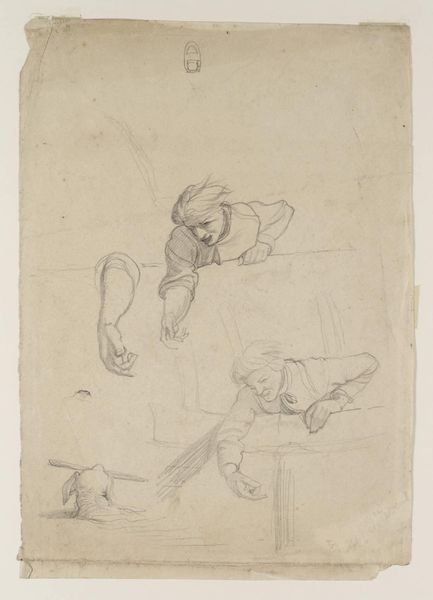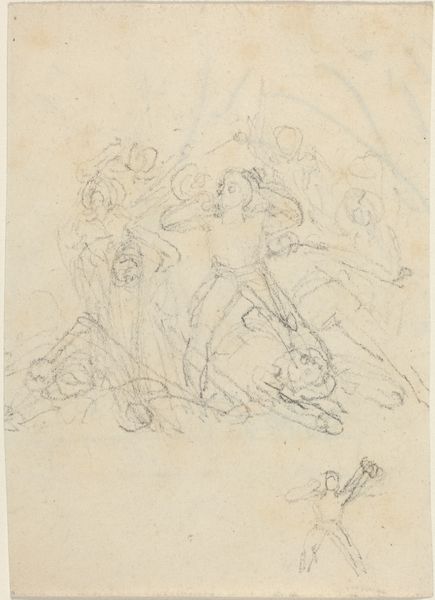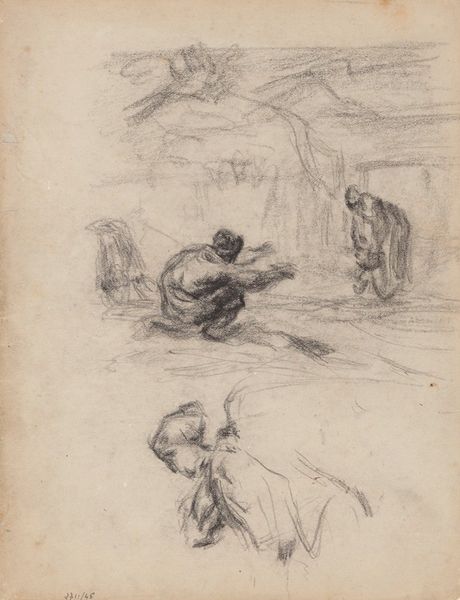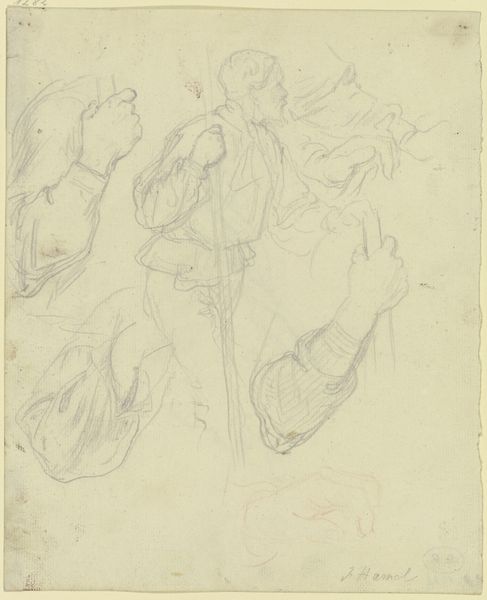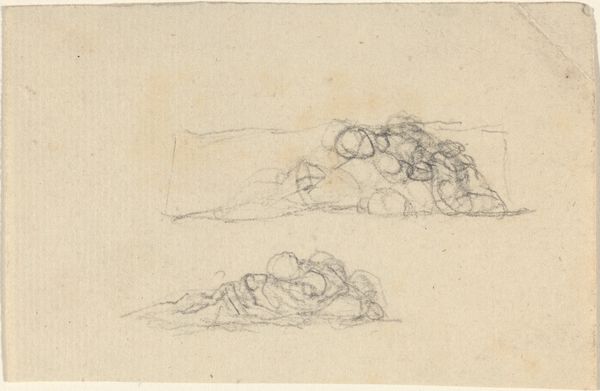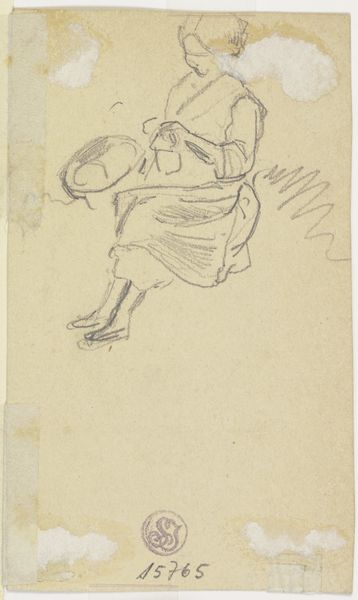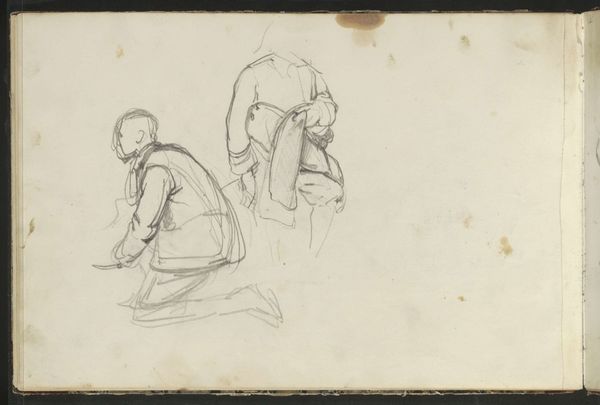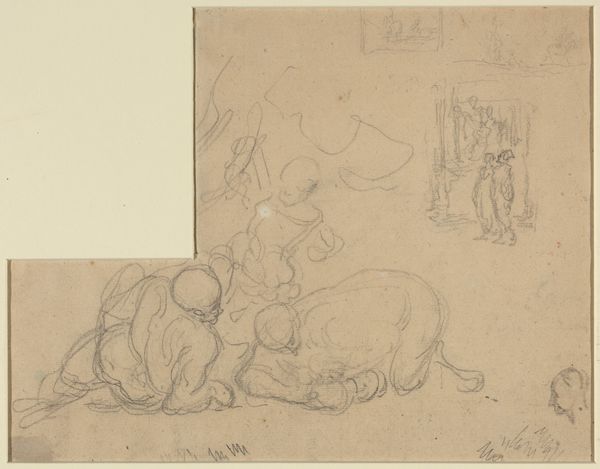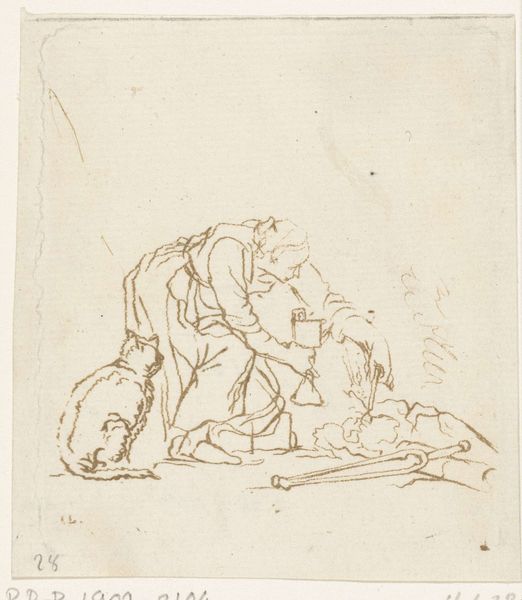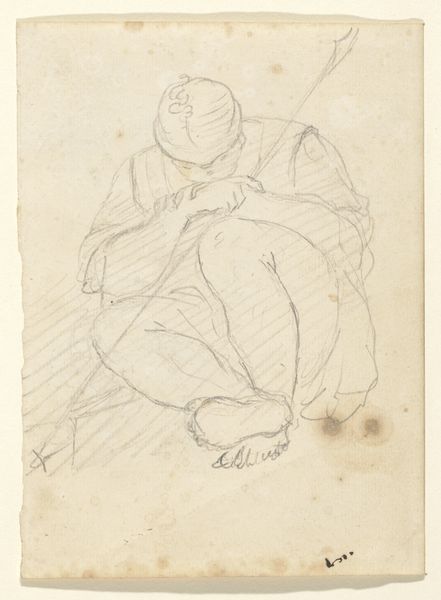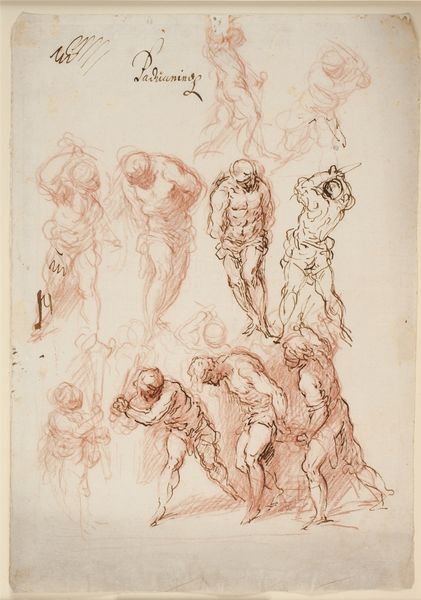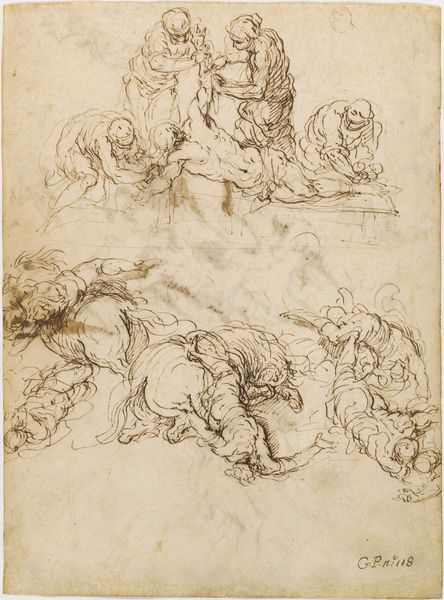
Four studies for the martyrdom of St Licerius 1548 - 1628
0:00
0:00
drawing, pencil
#
pencil drawn
#
drawing
#
figuration
#
11_renaissance
#
pencil drawing
#
pencil
#
history-painting
#
italian-renaissance
Dimensions: 286 mm (height) x 193 mm (width) (bladmaal)
Editor: So, this is "Four studies for the martyrdom of St Licerius," a pencil drawing by Jacopo Palma, also known as il Giovane, from sometime between 1548 and 1628. The brutality is immediately apparent; you see these different depictions of violence being inflicted on the saint. What symbolic meaning do you draw from these recurring images? Curator: Palma presents us not just with death, but the theatre of martyrdom, an agonistic interplay of power and suffering. Look at the angles of the bodies. They suggest an imbalance, with the executioner always above, Licerius prone, awaiting, vulnerable. Doesn’t this positioning become a recurring symbol, an emblem of subjugation within the cycle of persecution? Consider the cultural context - how did these images function within religious devotion? Editor: You mentioned a "theatre of martyrdom," and it's true, the staged quality is inescapable. Were these images designed to evoke pity or perhaps a more complicated feeling, like awe at the saint’s devotion? Curator: That is precisely the question. Martyrs, especially in the Renaissance and Baroque periods, weren’t simply victims. The depictions of suffering were supposed to trigger contemplation. Pity, certainly, but also emulation. Can we truly understand these drawings without understanding the ambition to mirror such conviction? Think about the symbolic power the artist invests in those brutal acts. They paradoxically signal faith, resilience. How does that strike you? Editor: It strikes me that it flips the whole thing on its head; violence becomes almost aspirational in a devotional context. I hadn’t really considered it that way. Curator: Precisely! The image becomes less about physical violence and more about spiritual triumph through sacrifice. A difficult message to accept today, perhaps. Editor: Yes, very different from modern sensitivities. Thanks, it’s been eye-opening. Curator: Indeed. It’s vital to revisit how historical art reframes fundamental beliefs, beliefs we can understand through careful observation and contextual awareness.
Comments
No comments
Be the first to comment and join the conversation on the ultimate creative platform.
